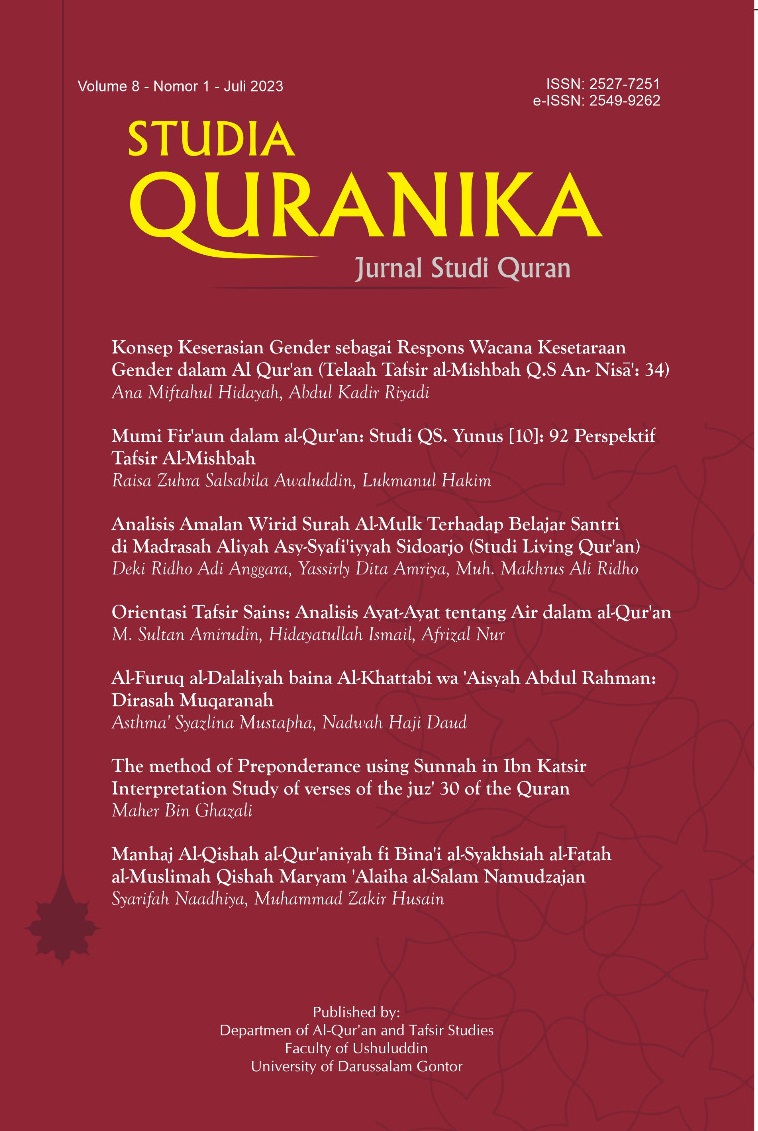الÙروق الدلالية بين الخطابي وعائشة عبد الرØمن (دراسة مقارنة)
DOI:
https://doi.org/10.21111/studiquran.v8i1.9424Keywords:
Al-Quran, I'jaz Lughowi, I'jaz Bayani, Khattabi, Aisyah Abdulrahman, BalaghahAbstract
This article aims to examine the selection of words and pronunciations that have a very subtle difference between the words that are similar and that correspond to the meaning in the holy book Al-Quran Al-Karim and to explore the secrets of the selection of these pronunciations in terms of the study of I'jaz lughowi and I'jaz Bayani. Every word used in the Quran carries a certain meaning that cannot be fulfilled by other words and has special features from the point of view of the science of bayan and the science of meaning. With this study, we can study the Quran so that we can experience the greatness of the Quran and the pleasure of interacting with the verses of Allah. This study compares two figures of different eras who were famous in the debate on the science of balaghah, namely, Khattabi and A'isyah Abdulrahman. Khattabi and A'isyah Abdulrahman think that eloquence and language style are miracles of the Quran. Balaghah is the appropriateness of eloquent and clear words to a person's situation and condition and being able to express it with a beautiful arrangement as well as giving the influence of the soul to it. The researcher used a descriptive-analytical methodology in examining the selection of words and phrases such as those that have very subtle differences in the Quran from the side of khatabbi and A'isyah Abdul Rahman.Downloads
Submitted
2023-02-21
Accepted
2023-07-20
Published
2023-09-04
How to Cite
Mustapha, A. S., & Haji Daud, N. (2023). الÙروق الدلالية بين الخطابي وعائشة عبد الرØمن (دراسة مقارنة). Studia Quranika, 8(1), 103–126. https://doi.org/10.21111/studiquran.v8i1.9424
Issue
Section
Articles
License
Copyright (c) 2023 Studia Quranika

This work is licensed under a Creative Commons Attribution-NonCommercial-ShareAlike 4.0 International License.












